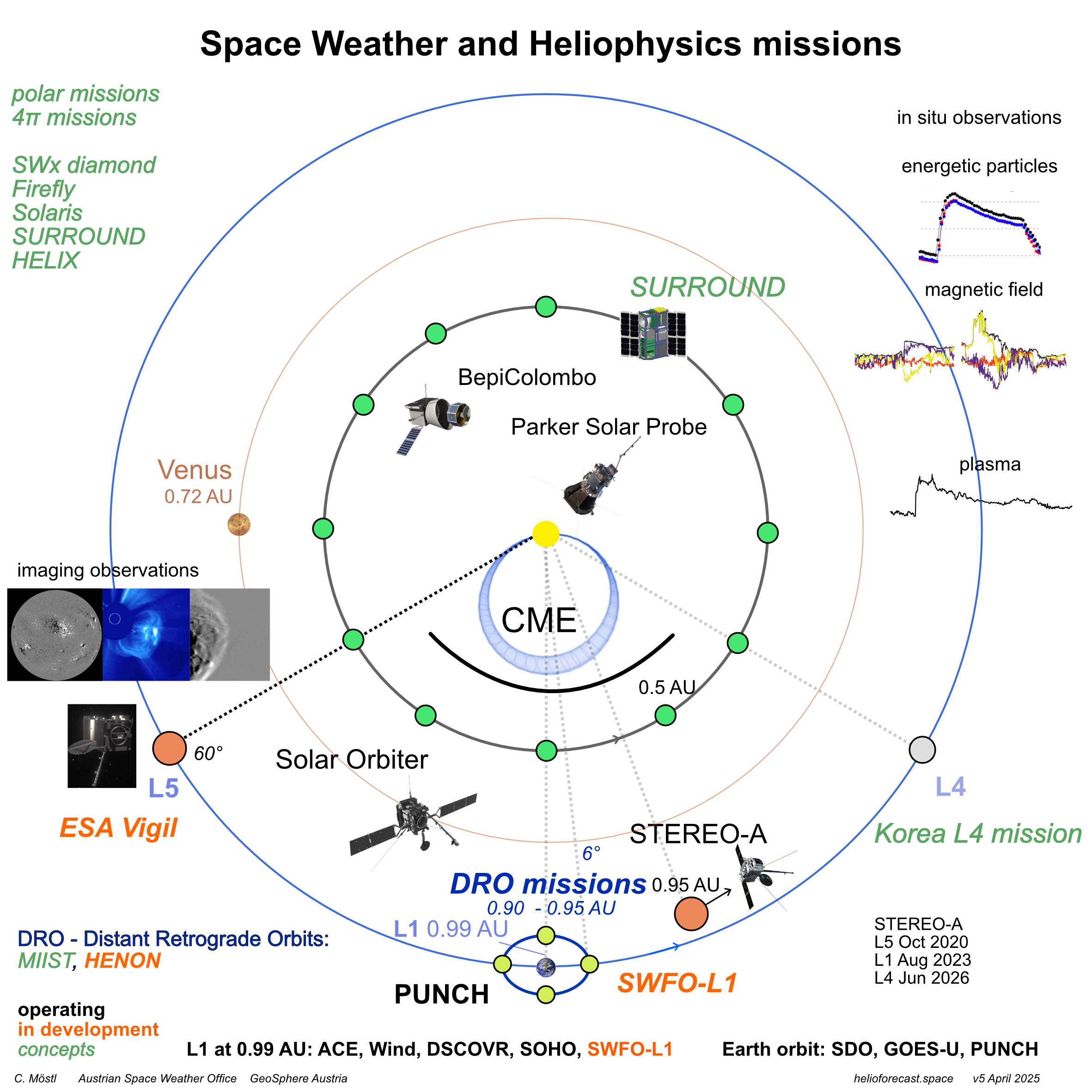The science of space weather is concerned with understanding the causes and effects
of varying conditions in mainly the Earth’s magnetosphere and atmosphere that are mostly driven by the Sun.
The solar wind is a supersonic flow of an extremely fast and tenuous plasma that is expelled by the Sun at all times,
and interacts with other solar system objects such as planets, comets and asteroids.
It carries a magnetic field that is shaped like a spiral due to the rotation of the Sun.
Normally, the slow solar wind, which nevertheless impacts Earth with 400 kilometres per second,
flows relatively quiet around the Earth’s magnetic field. However, during time intervals of strong southward magnetic fields
and higher solar wind speeds, which are caused by solar storms, also known as coronal mass ejections, and fast solar wind streams,
energy is transferred into the magnetosphere and the magnetic field of the Earth is temporarily disturbed. This results in a so-called geomagnetic storm.
The prediction of the solar wind impacting the Earth's magnetic field is a major unsolved problem in space science.
For example, an accurate solar wind forecast would tell us where and when the aurora lights up the sky, or whether power grids are at risks of failure,
besides numerous other impacts on space and ground based technological infrastructure.

Links for Experts
ESA Space Weather Service Network
CCMC CME arrival time scoreboard [about]
CCMC CME fitting tool [about]
ISWA Integrated Space Weather Analysis System [Web App] [tutorial slides] [about] [Web App layout (hint: clear browser history)]
DONKI [Web App] [about]
Space Weather trainings session [about]
Solar Orbiter Science Working Groups
UCLA Space Physics Exercises
Public relations text, image and video sources
Webcams to check out current auroral activity: Sweden (Abisko) USA (Chatanika, Alaska) Austria (Rax) Austria (Kals) Austria (Grossglockner)
The #1 site for daily space weather updates: spaceweather.com
Tamitha Skov has a fantastic youtube channel with weekly videos on current space weather.
US magazine Wired had a great story on destructive effects of solar storms in June 2022.
The NASA space weather FAQ page answers many basic questions.
A wikipedia list of historic solar storms.
The NASA scientific visualization studio has many animations concerning space weather.
This is a brilliant TED talk by our colleague Miho Janvier featuring animations from our group near the end.
NASA's Eyes is a fantastic software to explore the solar system and exoplanets, available both as a webtool and app.
The Sky Live is a 3D solar system simulator particularly useful for looking at comet orbits in the inner solar system.
Stellarium is the ultimate app for simulating the night sky.
Google maps, but for space.
Katie Mack has some general advice for careers in astrophysics.
Books
Lucie Green, "15 Million Degrees: A Journey to the Centre of the Sun"
Ryan French, "The Sun: Beginner’s guide to our local star"
Eric R. Priest, "Magnetohydrodynamics of the Sun"
Margaret G. Kivelson, C. T. Russell, "Introduction to Space Physics"
Video channels
Tamitha Skov Veritasium Cool Worlds NASA Goddard NASA JPL Space Videos
Materials for schoolchildren in german
Comic: Von Sternen, Monden und Planeten
Harald Lesch über Sonnenstürme
Kurzgesagt: Wie Sonnenstürme unsere Zivilisation zerstören könnten
